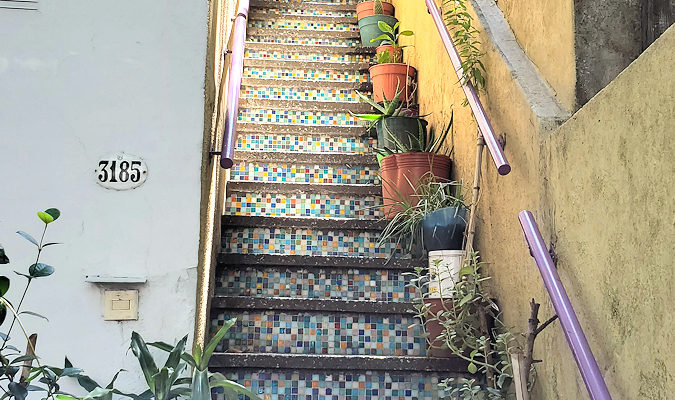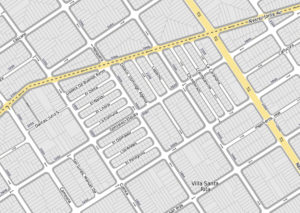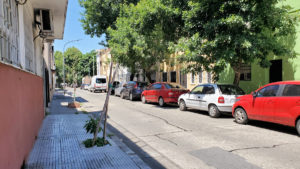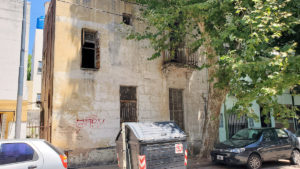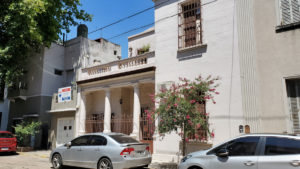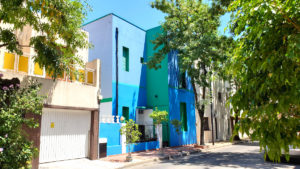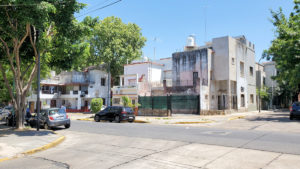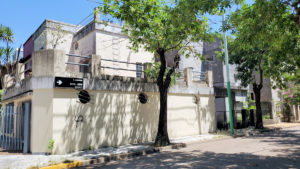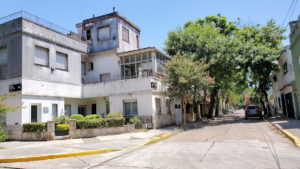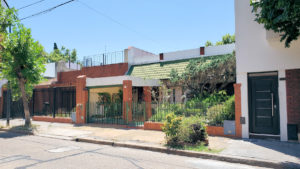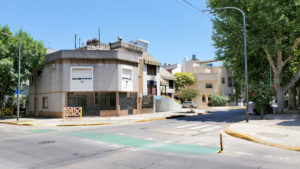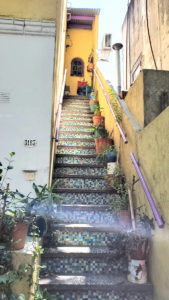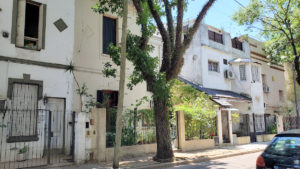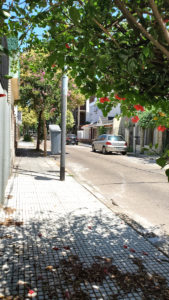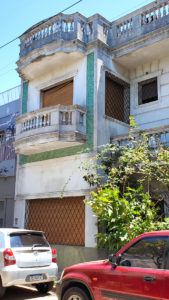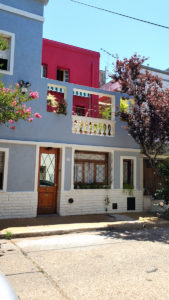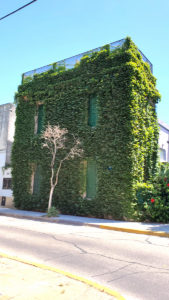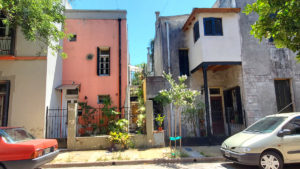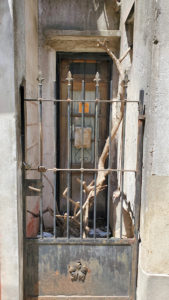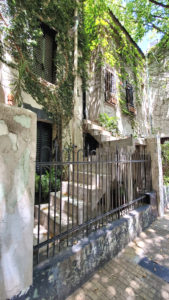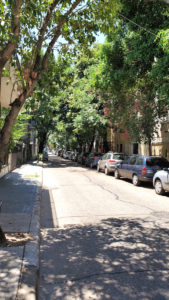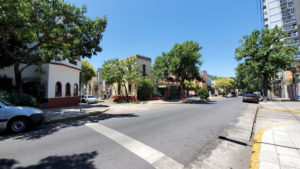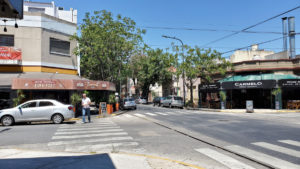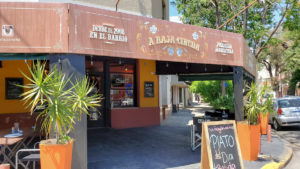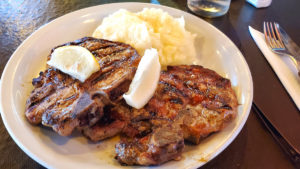I’m slowly getting back into my explorations of the city, and, coming up, some more of my short 2-3 day trips to places nearby to the city. It’s been too long, and I miss doing that stuff. It’s what happens when you settle in to domestic life. Not that that doesn’t give me pleasure, but there are things I’ve neglected that I enjoy doing that I’m going to start doing again.
So we’re going to start here, in what’s unofficially known as Barrio Nazca. Although one might make the case that the outline of these small streets – nearly alleyways, that are jammed into a six not quite square block area of Villa Santa Rita (the official barrio that includes this neighborhood) in the southwest part of the city make up some sort of Nazca line figure, sort of Chthulu-esque, it’s really just named for the avenue at the eastern end, Av. Nazca. Originally built between 1920 and the early 1930s, this was, while not a public housing project, at the least an attempt at providing very affordable housing. You can see if you blow the map up to full size that the lots that each house sits on are far, far smaller than typical housing lots in the surrounding areas. Basically, each lot is the size of the house that sits on it, with no yard space, front or back, just a bit of air space between the backs of buildings. With the exception of a small branch of the public library and a doctor’s office, every thing I saw, street by street, was residential. All the commercial stuff is on the surrounding and crossing avenues.
Street names are mostly based on nature, like parts of the river, El Delta and El Litoral; the south American ostrich, El Ñandu; a flower, La Calandria; a tree, Lapacho; a volcano, Chimborazo; a falcon, El Peregrino. One’s called the city’s magazine, Gazeta de Buenos Ayres. The eastern bloc has three dedicated to individuals, with the first two – Agente Domingo Dedico and Agente Ceferino Garcia in honor of the first two police officers killed in the line of duty during the 1931 anarchist uprisings that started the “Infamous Decade” that really lasted from then until 1943 when Juan Perón first took power in a coup; and Crainqueville, which is a French familial last name, presumably from someone involved in the project, or whose lands were involved, though I couldn’t find that info anywhere.
I’m going to leave the rest in pictures (a lot of them), other than at the end, when, of course, I’ll bring in some food. Because, food.
[Not so affordable anymore, the grey house on the left is for sale for US$230k!]
Wave bye-bye…
My little tour over, I had to eat. And just a few blocks away, the two top rated parrillas in the barrio of Villa Santa Rita. Eeny, meeny, miney, mo….
A Raja Cincha, Cuenca 1299, Villa Santa Rita – I ended up at this one. The name means, “excessively, without measure; or abruptly, very quickly”. I’m guessing they intend the former, as a superlative. Cute place, casual, typical neighborhood spot. Crowded together tables, a few outside, service friendly but random.
Now, I had planned this to be about steaks. But, checking online, as I am wont to do at times, everyone… everyone… raves about their barbecued ribs. And, I saw ribs as the daily special. Didn’t think to get into the details. Turned out to be two pork rib chops off the grill, with a little lemon. Cooked right – maybe a minute passed my personal preference, but not dry. No seasoning, but, salt on the table and lemon wedges fixed that. Good mashed potatoes, nicely seasoned and a reasonable amount of butter. Not the meal I’d hoped for, but not bad at all – especially for the daily special price of 250 pesos, including beverage – even with tip we’re talking a mere $4.50. I get out to Santa Rita every couple of months, so, a revisit for the BBQ ribs in the offing, as well as, one supposes, the place across the street.
